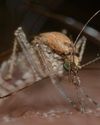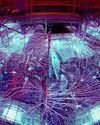Multiplexing in Loop-mediated Isothermal Amplification (LAMP) for Efficient Detection of Genetically Modified Organisms (GMOs)
Scientific India
|March - April 2025
Isothermal nucleic acid amplification refers to the amplification of nucleic acid using specific primers at a constant temperature where no separated denaturation, annealing and extension steps are required. Isothermal nucleic acid amplification techniques (iNAATs) such as loop-mediation isothermal amplification (LAMP) and recombinase polymerase amplification (RPA) have been used in GMO detection (Singh et al. 2019).
LAMP is preferred over other iNAATs because of its higher amplification efficiency, excellent specificity and sensitivity. LAMP was first introduced by Notomi et al. (2000) where amplification of template DNA is carried out at a constant temperature using four different primers recognizing six distinct regions on the target sequence. F3, B3 (outer primer pair) targeting the sequences of sense and antisense strands initiates the LAMP reaction, which proceeds at a constant temperature Further strand displacement DNA synthesis is primed using FIP, BIP (inner primer pair).
Since the past decade, LAMP-based assays detecting a single GM target or transgenic element has been reported using different detection systems and alternate platforms including a heating block, thermal cycler or real-time isothermal amplification system such as the Genie II, as reviewed by Singh et al., 2019. Based on the detection systems, LAMP can be categorized as end-point LAMP (visual detection) and real-time LAMP (detection based on florescence measurement as amplification and annealing curves), as shown in Figure 1.
Esta historia es de la edición March - April 2025 de Scientific India.
Suscríbete a Magzter GOLD para acceder a miles de historias premium seleccionadas y a más de 9000 revistas y periódicos.
¿Ya eres suscriptor? Iniciar sesión
MÁS HISTORIAS DE Scientific India
Scientific India
Japanese physicists were the first to measure the most tolerant entanglement state, the W state
There are many unusual things that happen in the world of quantum physics.
3 mins
September - October 2025

Scientific India
The Fifth Force: Could It Unlock the Secret of Dark Matter?
What if the universe is powered by a force we've never seen before? For centuries, science has explained nature with four fundamental forces.
3 mins
September - October 2025

Scientific India
A flu test you can chew
As flu season nears in the northern hemisphere, scientists are exploring a surprising new way to detect infection: through taste.
1 mins
September - October 2025

Scientific India
Lab-Grown Kidney Brings Artificial Organ Dream Closer to Reality
In a major leap toward bioengineered organ replacement, scientists have successfully grown human kidney 'assembloids' in the laboratory that mimic key structural and functional features of natural kidneys.
1 min
September - October 2025

Scientific India
Your pumpkin might be hiding a toxic secret
Pumpkins, squash, zucchini, and other members of the gourd family have a surprising trait: they can take up pollutants from the soil and store them in their edible parts.
1 mins
September - October 2025

Scientific India
2025 Nobel Prize in Physics Reveals Quantum Secrets in Superconducting Circuits
The 2025 Nobel Prize in Physics has been awarded to John Clarke, Michel H. Devoret, and John M. Martinis for their pioneering experiments that brought quantum mechanics from the invisible atomic world to the macroscopic scale a system large enough to hold in your hand.
1 mins
September - October 2025

Scientific India
Genomic Evidence Redefines the Evolutionary Age of Mosquitoes
A new genetic analysis has shaken up what we thought we knew about one of humanity's most notorious pests the mosquito.
1 min
September - October 2025

Scientific India
Nobel Prize in Chemistry 2025: Building Molecular Architectures with Room to Breathe
In a scientific breakthrough that bridges molecular design with planetary-scale problems, the 2025 Nobel Prize in Chemistry has been awarded to Susumu Kitagawa, Richard Robson, and Omar Yaghi.
1 mins
September - October 2025

Scientific India
Guardians of Immunity: Nobel Prize 2025 Honors Discoveries that Keep the Immune System in Check
The 2025 Nobel Prize in Physiology or Medicine has been awarded to Mary E. Brunkow, Fred Ramsdell, and Shimon Sakaguchi for their groundbreaking discoveries in the field of peripheral immune tolerance a crucial mechanism that prevents the body's immune system from turning against itself.
1 mins
September - October 2025

Scientific India
'Is cold nuclear fusion feasible?
In early May 1989, two chemists from the University of Utah, Pons and Fleischmann, arrived in Washington, U.S.A. The aim is to present their findings to members of the US Congress.
3 mins
September - October 2025
Listen
Translate
Change font size

